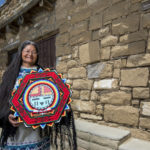 From the Navajo Nation in the high country—the largest reservation in the United States—to picturesque areas along the fertile flood plains of the Colorado River, the forests of central Arizona and the vibrant Sonoran Desert of Southern Arizona, American Indian communities share unique cultural experiences with visitors.
From the Navajo Nation in the high country—the largest reservation in the United States—to picturesque areas along the fertile flood plains of the Colorado River, the forests of central Arizona and the vibrant Sonoran Desert of Southern Arizona, American Indian communities share unique cultural experiences with visitors.
On these sacred lands, the state’s cultural tapestry is on display at powwows, art markets and other annual celebrations hosted by American Indian communities. See the pageantry and skill of tribal dancers and musicians and discover authentic artworks that preserve the traditions of each group such as Zuni stone fetish carvings, Navajo rugs, Hopi kachina dolls and Papago basketry.

Dragoon preserves the artistic heritage of Southern Arizona’s native cultures.
The Navajo Nation Museum, Hopi Cultural Center and other cultural centres throughout the state are excellent options for travellers interested in history, art and culture. The Museum of Northern Arizona in Flagstaff focuses on the high-desert and Colorado Plateau tribes, with artifacts and contemporary collections representative of Navajo, Hopi, Zuni, Apache, Pueblo and Havasupai tribes.
Some of the most popular cultural attractions take place near stunning natural wonders and manmade landmarks such as the ancient pueblo dwellings in the Navajo Nation in the north and Mission San Xavier del Bac in the Tohono O’odham Nation in the south. Internationally known museums also preserve the heritage of the state’s tribes.
Heard Museum in Phoenix showcases stories inclusive of all American Indian tribes in the state and hosts the annual Indian Fair & Market and World Championship Hoop Dance Contest. Today, 22 American Indian communities preserve their cultures and traditions on land that accounts for one-quarter of Arizona.
Many tribes operate museums to share their traditions with visitors. Arizona State Museum in Tucson and Amerind Museum in Dragoon preserve the artistic heritage of Southern Arizona’s native cultures.
Indigenous people inhabited what became Arizona more than 12,000 years ago.



















